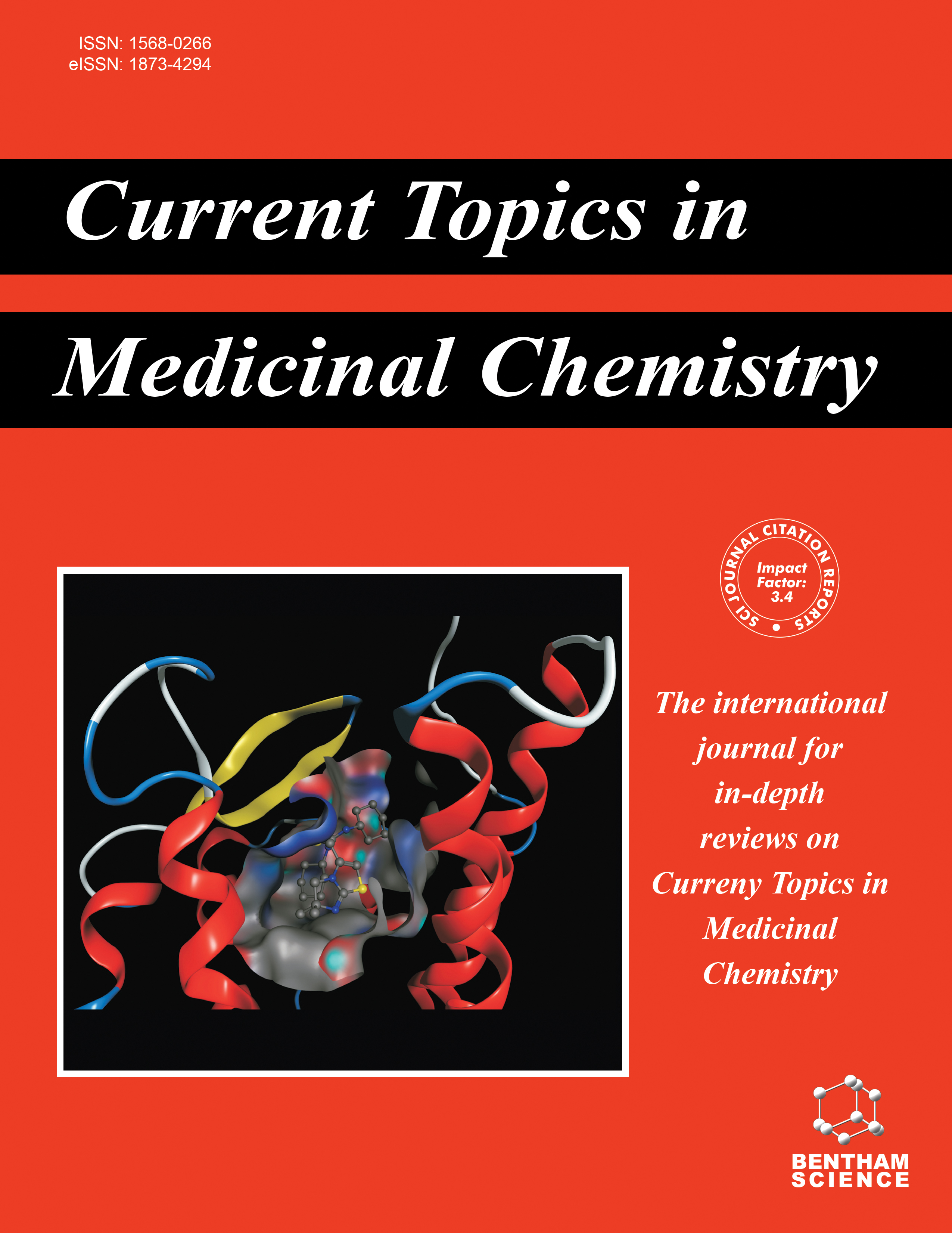- Home
- A-Z Publications
- Current Topics in Medicinal Chemistry
- Previous Issues
- Volume 3, Issue 5, 2003
Current Topics in Medicinal Chemistry - Volume 3, Issue 5, 2003
Volume 3, Issue 5, 2003
-
-
Naturally Occurring Iminosugars and Related Compounds: Structure, Distribution, and Biological Activity
More LessBy N. AsanoAlkaloids mimicking sugars in size and shape are now believed to be widespread in plants and microorganisms. Iminosugars are monosaccharide analogs in which the ring oxygen has been replaced by an imino group. Such iminosugars inhibit the glycosidases involved in a wide range of important biological processes because of their structural resemblance to the sugar moiety of the natural substrate and the presence of Read More
-
-
-
General Methods for Iminosugar Synthesis
More LessAuthors: L. Cipolla, B. La Ferla and F. NicotraRecent iminosugar syntheses starting both from commercially available sugars and non-glycidic precursors, are reported in this article. Exploiting carbohydrate starting materials, different synthetic approaches are described, mainly based on the introduction of an amino function in the sugar skeleton and the subsequent aminocyclization in order to generate the piperidine or pyrrolidine ring. The aminocyclization has been perf Read More
-
-
-
Iminosugars and Relatives as Antiviral and Potential Anti-infective Agents
More LessAuthors: P. Greimel, J. Spreitz, A.E. Stutz and T.M. WrodniggIminosugars have emerged in the literature during mid-1960's as synthetic compounds. Around the same time, the first examples were found in Nature and their interesting enzyme inhibitory properties were recognised. Due to their powerful interference with glycohydrolases (glycosidases) as well as glycosyltransferases, quite a few representatives exhibit notable biological activities. These range from antidiabetic, insect ant Read More
-
-
-
Imino-Sugar-Based Nucleosides
More LessAuthors: V.L. Schramm and P.C. TylerContinued interest in imino-sugar nucleosides derives from the observations that N-ribosyltransferases are powerfully inhibited by imino-C-nucleoside analogues that mimic the ribooxacarbenium ion nature of their transition states. The synthesis of such compounds is challenging, and synthetic routes to imino- and imino-Cnucleosides are reviewed, together with the nature of the N-ribosyltransferases that are targets fo Read More
-
-
-
Design, Synthesis and Biological Evaluation of Iminosugar-Based Glycosyltransferase Inhibitors
More LessAuthors: P. Compain and O.R. MartinDue to their pivotal role in the biosynthesis of oligosaccharides and glycoconjugates, glycosyltransferases represent targets of choice for the development of potent inhibitors and therefore for drug discovery. Since glycosyltransferase reactions are thought to proceed through transition states similar to those of glycosidases, iminosugars and the related compounds have been recently used to design potential inhibitors of Read More
-
-
-
Therapeutic Applications of Imino Sugars in Lysosomal Storage Disorders
More LessAuthors: T.D. Butters, R.A. Dwek and F.M. PlattThe N-alkylated imino sugars have inhibitory activity against the first enzyme in the pathway for glucosylating sphingolipid in eukaryotic cells, ceramidespecific glucosyltransferase. A therapeutic approach termed ‘substrate deprivation’ or ‘substrate reduction therapy’ (SRT) aims to reduce biosynthetic capability in the cell to match the reduced lysosomal catalytic activity seen in lysosomal storage disorders. The use of N-alk Read More
-
-
-
gem-Diamine 1-N-Iminosugars and Related Iminosugars, Candidate of Therapeutic Agents for Tumor Metastasis
More LessBy Y. NishimuraCancer metastasis is one of the major challenges in cancer research. Inhibitors of tumor metastasis are rapidly emerging as important new drug candidates for cancer therapy. Tumor metastasis formation occurs via a complex multistage process which involves a crucial step of tumor invasion through the basement membrane. Tumor cell invasion involves attachment of tumor cell to the basement membrane through laminin, d Read More
-
Volumes & issues
-
Volume 25 (2025)
-
Volume 24 (2024)
-
Volume 23 (2023)
-
Volume 22 (2022)
-
Volume 21 (2021)
-
Volume 20 (2020)
-
Volume 19 (2019)
-
Volume 18 (2018)
-
Volume 17 (2017)
-
Volume 16 (2016)
-
Volume 15 (2015)
-
Volume 14 (2014)
-
Volume 13 (2013)
-
Volume 12 (2012)
-
Volume 11 (2011)
-
Volume 10 (2010)
-
Volume 9 (2009)
-
Volume 8 (2008)
-
Volume 7 (2007)
-
Volume 6 (2006)
-
Volume 5 (2005)
-
Volume 4 (2004)
-
Volume 3 (2003)
-
Volume 2 (2002)
-
Volume 1 (2001)
Most Read This Month
Article
content/journals/ctmc
Journal
10
5
false
en


